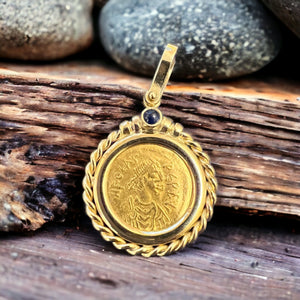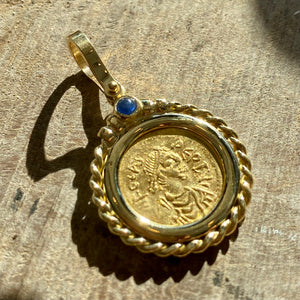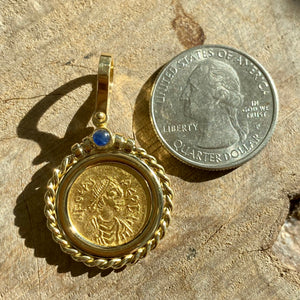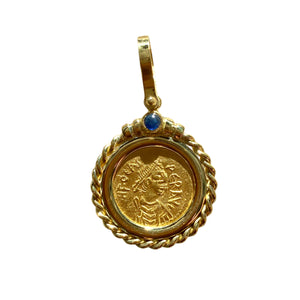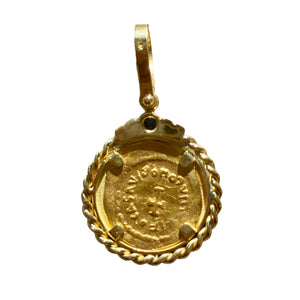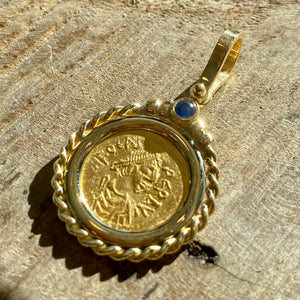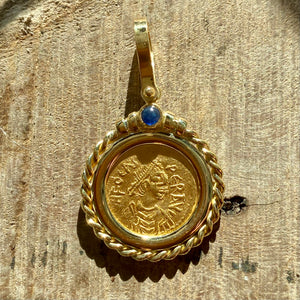Ancient Byzantine - AV Tremissis (Phocas) - Circa 602-610 AD - Mounted in 18K gold with a Sapphire accent on the bale
$4,130
Denomination: AV Tremissis (Phocas) Date: Circa: (602-610 AD)
Mint: Constantinople
Weight: 1.40g
Mount: 18K gold with Sapphire accent on the bale
Grade: NGC 6327574-017 - VF details - Strike: 4/5 Surface: 2/5
Description:Byzantine Empire: Phocas. Obverse: Bust of Phocas facing right is portrayed. Clad in a chlamys and a diadem on his head. Legend: QNF[OCA]S PERAVC, meaning “Our Lord Phocas, Perpetua Augustus”. Reverse: A cross consisting of two intersecting lines both ending in vertical small bars (cross potent) is depicted. Legend: VICTORIFOCASAVG, meaning “victory of Phocas Augustus” - CONOB, reference to Constantinople's mint where the coin was struck.
History: The tremissis or tremis was a small solid gold coin of Late Antiquity. Its name, meaning "a third of a unit", formed by analogy with semissis (half of a unit), indicated its value relative to the solidus. It was introduced into Roman currency in the 380s by the Emperor Theodosius I and initially weighed 8 siliquae (equivalent to 1.52 grams). Phocas was Eastern Roman emperor from 602 to 610.
Phocas was born in 547 AD and died on October 5th, 610. Initially, a middle-ranking officer in the Eastern Roman army, Phocas rose to prominence as a spokesman for dissatisfied soldiers in their disputes with the court of the emperor Maurice. When the army revolted in 602, Phocas emerged as the natural leader of the mutiny. The revolt proved to be successful and led to the capture of Constantinople and the overthrow of Maurice on November 23rd, 602, with Phocas declaring himself emperor on the same day. History tells us that Phocas was mostly from Thrace. Ever since Emperor Constantine I, introduced it in 309, the Byzantine Empire's main coinage had been the high-quality solidus or nomisma, which had remained standard in weight (4.55 grams) and gold content (24 carats) through the centuries.
63237










